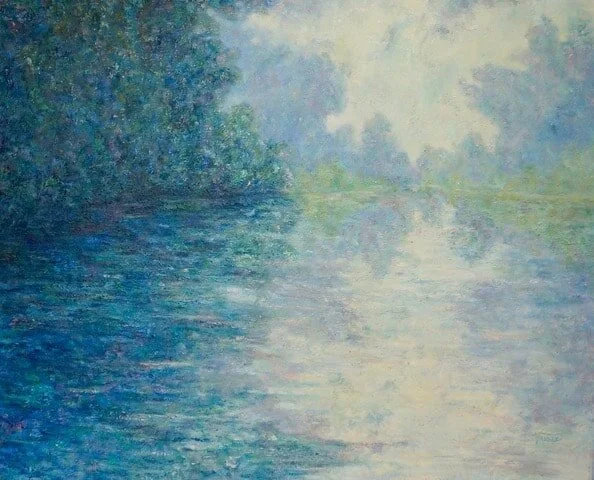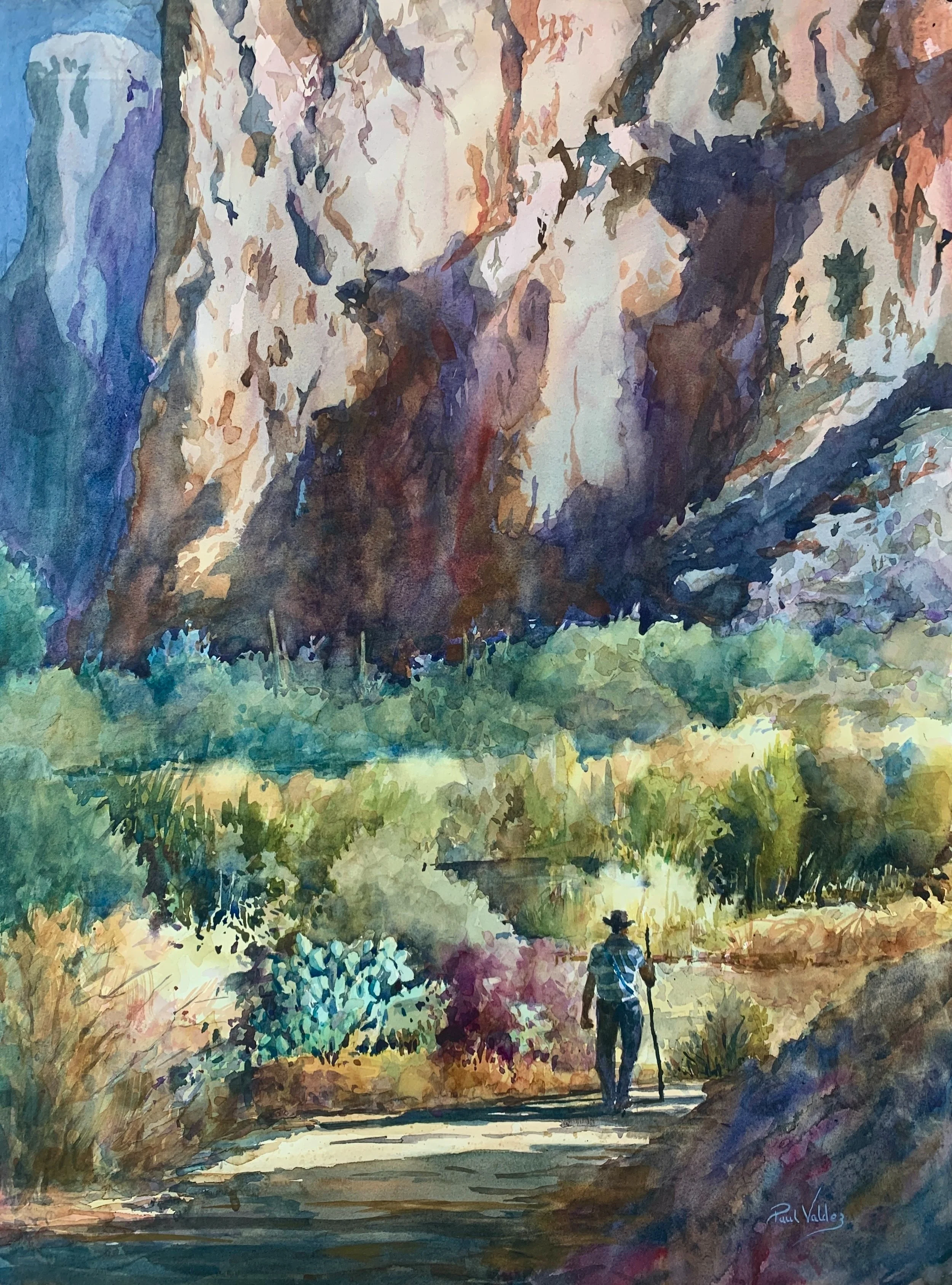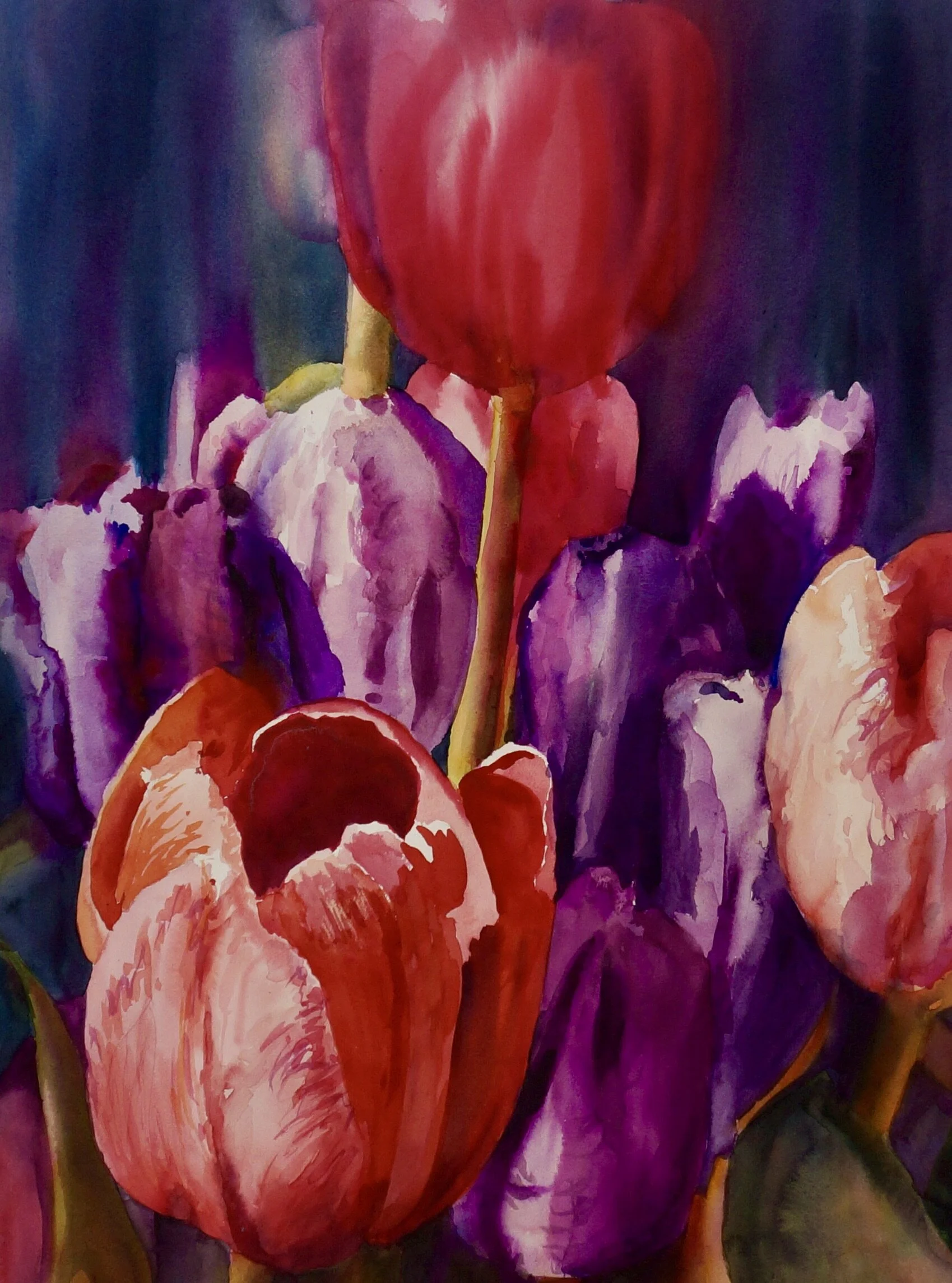Part 8: Mixing Your Paint on the Paper | Do Not Be Afraid of Watercolor Series
Welcome to the Do Not Be Afraid of Watercolor Series. In this video, we learn about mixing your paint on paper.
Watch the video for details and then find your shopping list in the description below. Let’s get started!
TOOLS USED:
Arches 140 pound paper
Bull clips to hold paper down
PAINT COLORS USED IN THIS VIDEO:
Yellow ochre
Cerulean blue
Permanent rose
Viridian
Transparent yellow
Windsor Newton blue
Holbein bright violet
Full Video Transcription:
Good morning. Hi, my name is Paul Valdez.
And this is the Do Not Be Afraid of Watercolor series. Thank you so much for joining me today. This series is for the serious watercolor, beginner wanting to avoid the mistakes that I have made starting out some 30 years ago.
Today, we will mix watercolor on paper rather than as we did in video 7 on the palette.
This can be paint from the well, and then you mix and then you put it on paper. But today the paper is going to do the mixing. So we're going to go from the paint to the palette, to work it out and then to the paper. So this is pure paint more or less and I'll show you how it goes. Alright, my first example will be painting wet on wet.
So I'm going to wet a small little rectangle here. I'm using arches, 140 pound paper. It is at a slight angle and my watercolor is not taped. I use bull clips to keep my paper down so that I can adjust it as time goes on. And one of the things that I have learned is that you can take watercolor paper after it's dry.
And just run it. So your fingers are like this like this and just run it around the edge of a couple of times and kind of give it a nice, little bend and turn around, and do the same thing on the other side and that takes out a lot of the waves and you can get back to painting after it has dried. So, I've got my little wet rectangle here. And the first color we're going to put on it is yellow ochre. Now yellow ochre is a somewhat opaque-ish color, but when you're doing a wash on wet, it really creates a beautiful Initial wash.
And what's beautiful about yellow ochre is that you can add just about anything to to the color itself from cerulean blue to ultramarine blue and just about anything. Truly. We're going to use two colors. Today will use, let's use a cerulean blue. I had to since I mentioned that this is not exactly a transparent color. This is not exactly a transparent color. So this is very interesting to use two semi-opaque ish colors to do a wash.
I'm going to do two strokes. I'm going to let it go and then I'll do one in the middle and then one off the page we get a little more paint and one off the page here. Okay, we're just going to let them go and already you can see the translucency of the paper. The paint coming through here.
And then look at this running down and that's without even a striking angles. Also, if I add degrees to that angle, look at that come down and that is just gorgeous. Right? So let's play with that and I'm going to take a little bit of permanent rose. And what I do is I put it on the palette to work it out. Make sure that there's no pigment on my on my bristles and then we do the first stroke. If there is pigment on there, it'll kind of mess things up a little bit.
So, let's take and load up my brush. Loading up me. And you just take a lot of paint on there. It's all right, in the nice belly there and then we're going to go across just one spot there. Let that run down. We'll go here at the bottom. Half on - half off. And then, let's go right in the middle.
Now, we're going to take this and this one was pretty wet. I have to say but let's let them mix. Anyway, let's let them have fun, huh? But look at the look how beautiful that is. Yellow ochre.
Cerulean blue. Permanent rose. Okay. Now this is dry. We're going to do wet on dry. We're going to take a little bit of viridian will work it out here. We're going to do a nice short, little rectangle here. Go across couple strokes. Load up my brush, do it again. Okay. Now so we have a wet paint on dry paper.
We're going to take a transparent yellow. Load up my brush, and we're going to just take and go right off the cross. The top one stroke. Wow, now we're going to take a little more. Sorry about that. Mixed it with the yellow ochre. Okay, we're going to get work that out again. Do you see the pigment in there? Alright. So we're going to work that out. We're going to load the brush up, get it nice and full, and we're going to go half on half off.
Look at the difference of green. It makes us gorgeous.
I like to play it. I'm so tempted and I'm going to do it to take some of this wet and just let it come down and mix with what we have there and just let that happen and see where we go with it. Kind of like that. Love playing with this stuff! So earlier. I took a transparent yellow and a did a wash because I wanted to show you transparency over transparency.
Let's take a little bit of that transparent yellow, and that looks like this. Right there and we're just going to go up make another transparent over transparent. So the same color over the same color. Now, let's take a little bit, go totally different, go permanent rose, and that looks like this and we're going to go up.
I'm gonna let that hit too. So you got this cool more, cool, pinky rose color right here. And you see how it warms up using the transparent yellow underneath? And then, lastly, we're going to take Windsor Newton blue. This is the greenish shade. It's pretty bright blue and I'll show you what that looks like. Pretty bright, but when we take it up on the yellow, and I'm going to go up as well. I'm going to keep going up, keep going to keep going up.
Now, isn't that fun? But look how it turned from a blue to a green. There were getting really deep green, and then it starts to gray off as it mixes with all the other colors. That was a great experiment and then this is sort of coming in as well. Happy accident as they say, I'm going to take one more color. This is Holbein bright violet. And what we're going to do is we're going to go across the whole thing. It's just nice one, one stroke. To show you what happened. So, that's the color. So what happens when it mixes with yellow.
I apologize. I probably should have taken the water and taking my brush and hit the paper and, and taken off some of that water. So it didn't, but you can see how it goes from violet to this interesting yellow-violet to a more red-violet to a kind of a mix of a greenish, grey type of thing going on. Love that watercolor.
I have to tell you, is just so much fun. Sometimes. You never know what you're going to get, but the idea here is for you to play and learn and then store it in your, your little brain, so that when you need this or this, or this, you can recall that from all the practicing that you've been doing. So. You have to be patient sometimes. If not, you'll create mud. So be careful of that, and I hope you enjoyed this.
Please share and like and if you haven't already done so, subscribe. Practice practice, practice, drop me a line. If you have any questions, thank you so much for watching. And this is Paul Valdez saying, see you next time.













